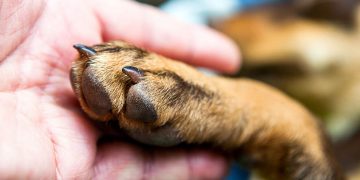Fun Facts About Cats – It’s true that cats are mysterious creatures. But if you’ve ever wondered why they behave the way they do, or how they came to be so popular, we have answers for you! We know that cats can be aloof, but do you know why? Or how about the fact that some don’t like water? Find out all this and more in our list of fun facts about our feline friends.
Cats have been domesticated for thousands of years.
While cats have been domesticated for over 10,000 years, they were first domesticated in ancient Egypt. Back then, they were used to control pests like mice and rats. The Egyptians also kept cats around because they thought the animals would bring them good luck.
Today, we know that there are many benefits to having a cat companion in your life! Cats can help reduce stress and anxiety by acting as a soothing presence during stressful situations. They’re also excellent at helping owners manage depression or loneliness due to their friendly demeanor and playful nature—just watch any cat video on YouTube!
Cats can jump up to five times their own height in a single bound.
Cats have a spring in their step, literally! Cats can jump up to five times their own height in a single bound. They also have incredible balance, which helps them land on their feet when they fall off heights like the tops of refrigerators or tables.
Cats can jump up to three times their height and five times their length—that’s pretty impressive!
Cats use their whiskers to help them detect changes around them, such as movement of objects near their face.
Did you know that cats use their whiskers to help them detect changes around them, such as movement of objects near their face?
Tiny hairs on a cat’s nose and upper lip are called vibrissae (which means “eyebrows”). These whiskers are highly sensitive to touch and can detect changes in air flow or even vibrations in the ground. This allows cats to navigate in the dark and avoid bumping into things when walking on narrow surfaces such as window sills or tree branches.
A cat’s purr might be a form of self-healing, as it can be a sign of nervousness as well as contentment.
A cat’s purr might be a form of self-healing, as it can be a sign of nervousness as well as contentment. When cats are nervous or frightened they tend to hide and become quiet. If you hear your cat purring loudly in this situation, it is likely that they are trying to calm themselves and not show their fear. On the other hand, if your cat is relaxed and happy then you have every reason to believe that their purring is genuine!
The act of purring has been shown to have several health benefits including:
- Relieving stress and anxiety
- Reducing blood pressure
- Helping with pain relief
A cat usually has about 12 whiskers on each side of its face.
Cats have 24 whiskers on each side of the face, for a total of 48. The exact number depends on their age, but it’s usually between 12 and 18.
Whiskers are sensitive hairs that help cats detect changes in air pressure and temperature. They allow cats to sense if they can fit through tight spaces, if there is danger nearby or whether food is nearby.
The cat’s front paw has 5 toes, but the back paws have 4. Some cats are born with as many as 7 front toes and extra back toes (polydactyl). These are often called Hemingway cats because the author was so fond of them.
The cat’s front paw has 5 toes, but the back paws have 4. Some cats are born with as many as 7 front toes and extra back toes (polydactyl). These are often called Hemingway cats because the author was so fond of them.
It’s true! Cats have five toes on each of their front paws, and four on each of their back paws. So if you’ve ever seen a cat with extra or missing digits, it’s not a deformed limb—it’s completely normal for these animals to have some variation in their digits.
A polydactyl cat is one that has six or more toes on one or both forepaws; such cats are sometimes considered good luck charms in certain areas where they’re common enough to be considered “typical.”
Cats do not have 9 lives. They only have one. However, thanks to their natural balance and flexibility, house cats often land on their feet when they fall from high places.
There is no magic number of lives that cats have, but they do have a very special ability to survive falls from high places. This combination of natural balance and flexibility allows them to land on their feet when they fall from great heights.
If you are a cat owner, you’re probably already familiar with this ability—if not, just watch your cat jump off the couch or furniture for a few minutes. Or if you’re feeling brave, try it yourself! Just be sure to wear protective headgear in case of injury or death. As long as you don’t weigh too much (and if you do weigh too much, maybe consider losing weight), your cat should be able to land safely on its back legs without issue (although some bruising may occur).
There are over 500 million domestic cats in the world, with approximately 40 recognized breeds! Domestic cats are thought to be descended from African wild cats.
Did you know that there are over 500 million domestic cats in the world, with approximately 40 recognized breeds? Domestic cats are thought to be descended from African wild cats. One of the most popular pets in the world, they have been companions since ancient times. They have also been used as pest controllers and for their fur, which was later replaced by synthetic fibers like nylon or polyester.
The ancient Egyptians were believed to be among the first people to tame cats; then around 4500 BC, farmers in what is now Turkey began keeping them as rodent killers. The Egyptians worshipped their feline friends and kept them as pets until they became widespread throughout Europe during Roman times (about 100 AD).
A female cat carries her kittens for about 58-65 days before they’re born.
The gestation period for cats is about 9 weeks. You might think that means kittens are born after 9 weeks, but they actually come out before then!
Cats give birth to 2-6 kittens, which are blind and deaf when they’re first born. They have their eyes open at the time of birth, but they don’t see very well—their eyesight only develops fully after about two months!
Cats clean themselves.
Do you know one of the reasons your cat wraps itself in a ball? It’s because it’s cleaning itself. Cats are known for their fastidious nature, and their ability to clean themselves is just one of their many traits that make them such good pets. When cats groom themselves, they do so by licking the fur on their body. This grooming helps keep them clean and healthy by removing dirt and other particles from their coat which would otherwise build up over time.
Cats have 70% of their body covered in fur (the rest is skin), so licking too much can cause problems for your pet—especially if it eats something toxic! But don’t worry—if your cat does ingest something bad, chances are he’ll throw up before any real damage occurs at all.
Cats have no collarbone.
You may have noticed that your cat can twist her body in ways you’ve never been able to. This is because cats have a flexible backbone. They can bend their bodies in ways humans cannot, which allows them to fit into small spaces and squeeze through the tiniest holes.
Cats sleep a lot!
Cats sleep for at least 16 to 20 hours a day. That’s more than any other animal on the planet! In fact, cats spend up to 1/3 of their lives sleeping. A cat will sleep 15 times longer than a human being sleeps in the same amount of time, too.
Cat’s whiskers help them navigate the world.
You might be surprised to learn that a cat’s whiskers are more than just nice accessories. In fact, they’re super important for the cats’ survival. Cats use their whiskers, which are highly sensitive to vibrations in the air, to find out where they are and where they’re going when it’s dark or when something blocks their vision.
Whiskers help guide cats along as they walk around without colliding with obstacles like walls and furniture. Whiskers can also tell if there is enough room for a cat to fit into an opening, such as under your bed or inside a box (though some cats may be too stubborn to listen).
A cat’s sense of smell is 14 times greater than a human’s.
Did you know that your cat’s sense of smell is 14 times greater than a human’s? That’s because cats have a specialized organ in the roof of their nose called the vomeronasal or Jacobson’s organ.
The Jacobson’s organ connects to an area of their brain called the olfactory bulb, which processes smells and sends information to other parts of their brains as well as muscles in their bodies for action. This allows cats to detect odors at concentrations 100 times smaller than what humans can perceive. Cats use this exceptional ability to find food, detect danger and communicate with each other—all things that are essential for survival!
Cats have 42 teeth.
Cats have 42 teeth, but only 30 are visible. There are 4 types of teeth in cats: incisors, canines, premolars and molars. The incisors of cats are located at the front of their mouth and there are 6 on top and 4 on the bottom. Cats also have two canine teeth at the front that are used for hunting and defense against predators. Finally, there are three pairs of premolars (behind each canine tooth) and one pair behind them is an additional molar that helps grind food down into smaller pieces so it can be swallowed more easily by cats with shorter digestive systems than humans or dogs.
A cat can jump up to 5 times its height in one jump.
You may have seen your cat jump up onto a tall shelf or chair, but did you know that your cat can leap up to five times its own height in one jump? That is pretty amazing!
Cats are very agile, and they can jump up to 30 feet in a single leap. If the situation calls for it, cats can also jump up to 20 feet straight into the air.
There are more than 500 million domestic cats in the world.
Did you know that there are more than 500 million domestic cats in the world? Cats are the most popular pet in the United States, with more than half of Americans owning at least one cat. It’s estimated that there are about 100 million dogs and about 40 million birds as pets. Of course, not all cats are domesticated—some live in forests or jungles around the world.
A female cat is called a queen or dam; a male is called a tom and all babies are kittens.
A female cat is called a queen or dam; a male is called a tom. Kittens are the babies of cats, not puppies. Cats have kittens and dogs have puppies, so if you ever see someone talking about “puppies” in reference to cats, it’s probably just because they don’t know any better.
The first cats were domesticated over 4,000 years ago in Egypt.
The first cats were domesticated over 4,000 years ago in Egypt. Cats were originally brought to Egypt from Africa, and they became a part of ancient Egyptian culture. Because cats were associated with the goddess Bastet, they were worshipped and often mummified after death. Cats were also kept as pets in homes and temples. Their main purpose was to control pests like rats and mice, but they also protected grains from mice who would eat them if given the chance.
Read More:
Cats are pretty cool!
Cats are pretty cool, and here are ten reasons why:
- They’re cute!
- They’re loyal!
- They’re independent!
Conclusion
Cats are a beloved pet that has been domesticated for thousands of years. Their purr might be a form of self-healing, as it can be a sign of nervousness as well as contentment. A female cat carries her kittens for about 58-65 days before they’re born. Cats do not have 9 lives; they only have one. However, thanks to their natural balance and flexibility, house cats often land on their feet when they fall from high places. There are over 500 million domestic cats in the world

























